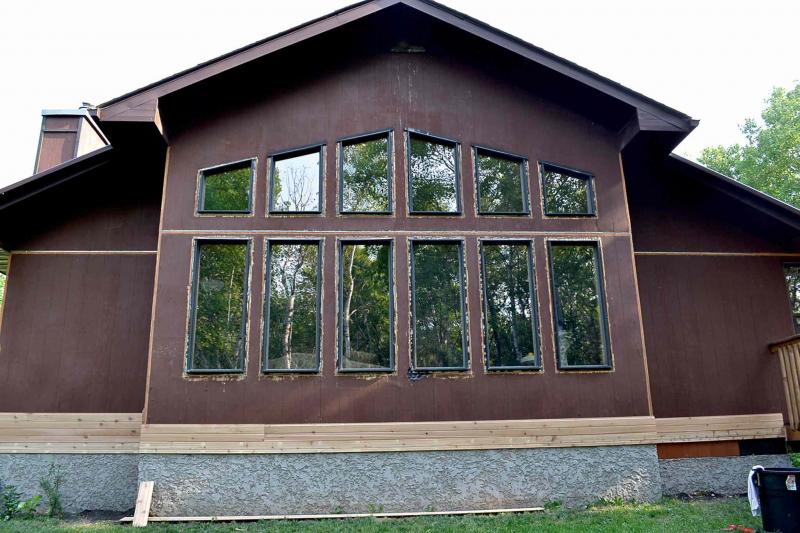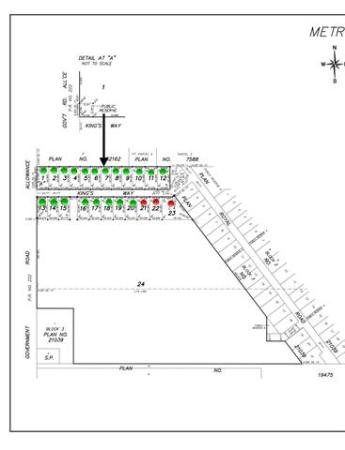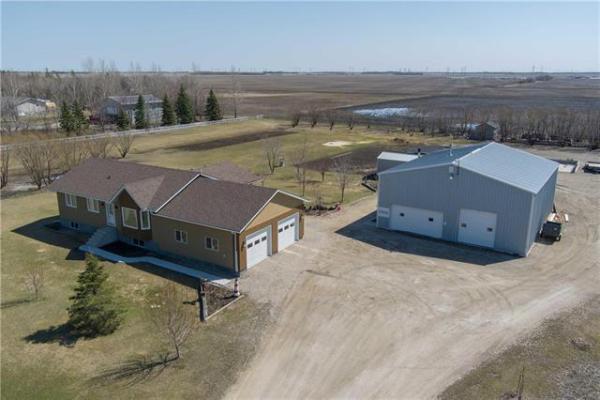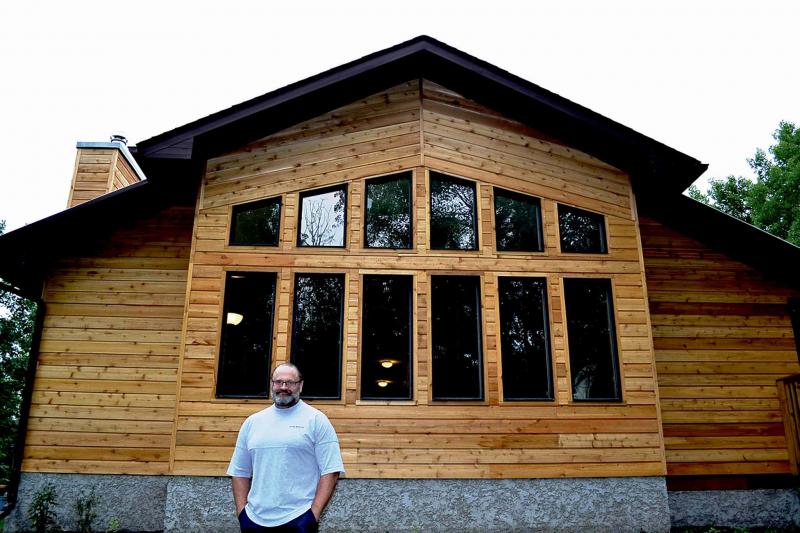
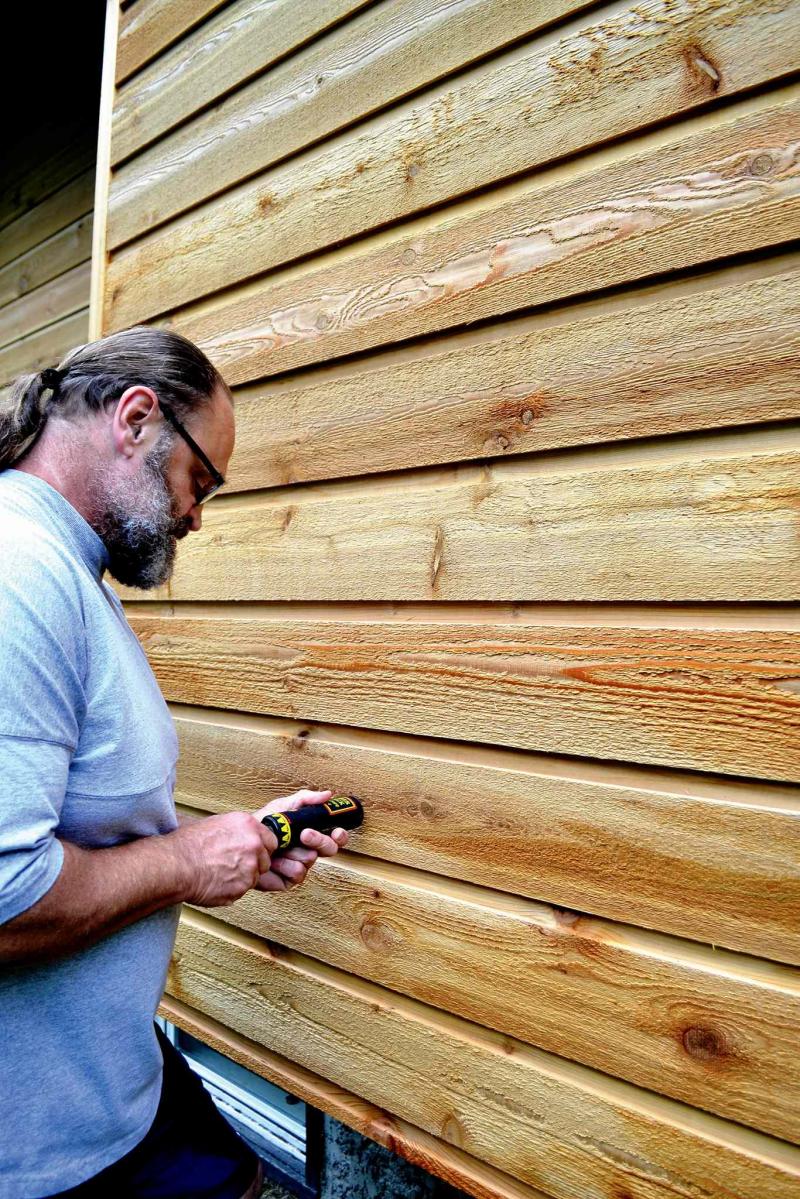
Is western red cedar a DIYer's dream siding?
Bruce Morrish pondered this question when it became obvious that his 20-year-old home needed a facelift.
Originally sheathed in three-eighths-inch ranch wall, a paintable or stainable plywood with an embossed figure with incised parallel lines to resemble solid wood planks, the house's thin veneer was showing its age.
"The ranch wall on the south-facing side of my house had warped in many places and there was an area under a window where the siding was rotten because the caulking had separated from the flashing, allowing water to seep in," Morrish said.
He spent the better part of a year researching different types of siding including overall cost, visual appeal, ease of maintenance and DIYer practicality.
"I wanted my house to look like a rustic cabin in the woods, even though it's about 1,500 sq. ft. with a full basement," he said.
His home in the Anola area sits on high ground overlooking a stream and is surrounded by maturing oak, maple and trembling aspen trees -- an excellent location for a rural retreat.
The first siding he investigated was Hardie board, a fibre cement-based product available either primed or pre-painted with a baked-on finish.
Though Morrish liked the look of Hardie board, he was turned off by its high cost in relation to other sidings, as well as the time and difficulty required to install the material to meet the manufacturer's specifications for a 50-year transferable warranty.
Other cons were the weight and lack of flexibility of long lengths which can be snapped if not carried carefully by at least two people, and the blotchy appearance associated with a bad paint job.
Morrish said he also researched Kaycan Nature-tech KWP, an engineered siding consisting of wood fibre or strands, exterior-grade resins and zinc borate to discourage rot and insects.
"I rejected this material because it required excessive caulking to completely seal the butt, corner and window joints. Sustained contact with water that leaks behind the boards will break down them down, much like OSB separates when exposed to moisture," said Morrish.
Another engineered wood-fibre and resin-based cladding he considered was pre-finished CanExcel. The siding comes in six-inch or nine-inch widths that fasten together with a spline/overlap or use a divider strip to cover long joints, similar to board and batten construction.
"CanExcel has a textured wood-grain appearance and is available in a cedar tone that is very similar to western red cedar," said Morrish.
"I was seriously considering this product until I read that it has severe shrinkage problems. In some cases, boards reportedly shrank so much that the divider strips were no longer wide enough to cover the joints," he said.
Another negative was the uninstalled price of about $2.50 per square foot for lighter tones and $2.60 for darker ones.
Morrish knew he could purchase solid western red cedar from Mopress Manufacturing near Birds Hill Park for about $2.65 per square foot or cottage-grade T&G knotty pine for approximately 40 cents per linear foot.
He also thought about buying pre-finished cedar from Mopress but the cost was prohibitive, doubling the price to over $5.00 per square foot.
In a final act of desperation, Morrish said he got a quote on vinyl siding from a large Winnipeg renovating company.
The installation price was $3,500, not including the cladding which, depending on the quality of the product, could have doubled the final cost.
"Though it's supposedly easy for a DIYer to install, vinyl siding is not the ideal material for a home located in an idyllic setting," Morrish said, adding the product looks phoney even to a person with severe myopia.
At the end of all his searching, Morrish returned to his first love, rough-faced channel western red cedar.
As it turned out, this spring Windsor Plywood on Main Street had tight-knot select on sale for $1.17 per linear foot or about $2.40 per square foot.
Morrish spent $4,000 on the cedar, including the rental of adjustable steel scaffolding that he deemed absolutely necessary to complete the job without injury.
Along with help from friends, his son Alexander and his wife, Keran, he covered the entire exterior of his home with the gorgeous siding in about a month, working mainly weekends and evenings.
2His dilemma was solved when he visited the nearby home of Donny and Kathleen Rudko who covered their large dwelling with horizontally mounted channel cedar in 1992.
"We used a Sikkens Cetol three-step product to cover the cedar originally, since then we have applied a single coat of Sikken's Maintenance Clear every ten years to prevent the wood from turning grey.
Rudko said there has been no problem with rot because the oil-based stains/sealers form an impermeable shield that sheds water like a loon's back.
Morrish plans to stain his cedar with an updated version of Cetol three-step called Log and Siding that requires only two applications.
"Log and Siding is pricy at $100 per gallon," said Morrish. "But if I only need to touch up my cedar every ten years, I'm all for it."
Overall, he estimates he has spent $6,000 on wood, tool rentals and stain, not including his time and that of friends and family.
"It was worth it. I got the rustic look I wanted, the cedar was easy to apply with an air-nailer and now I won't have to second guess myself about the less desirable sidings I might have used instead," he said.
Western red cedar is definitely a DIYer's dream in his neck of the woods.
davidsquare81@yahoo.com

